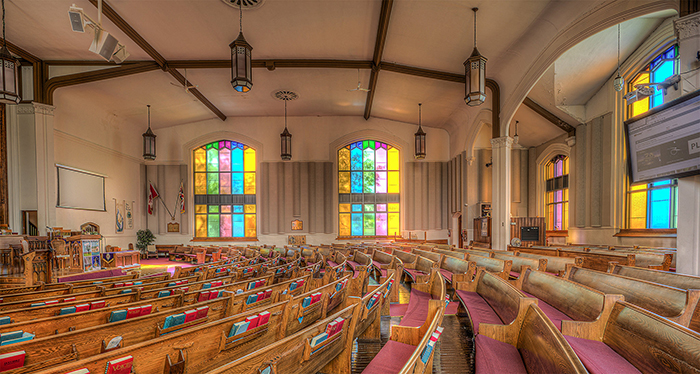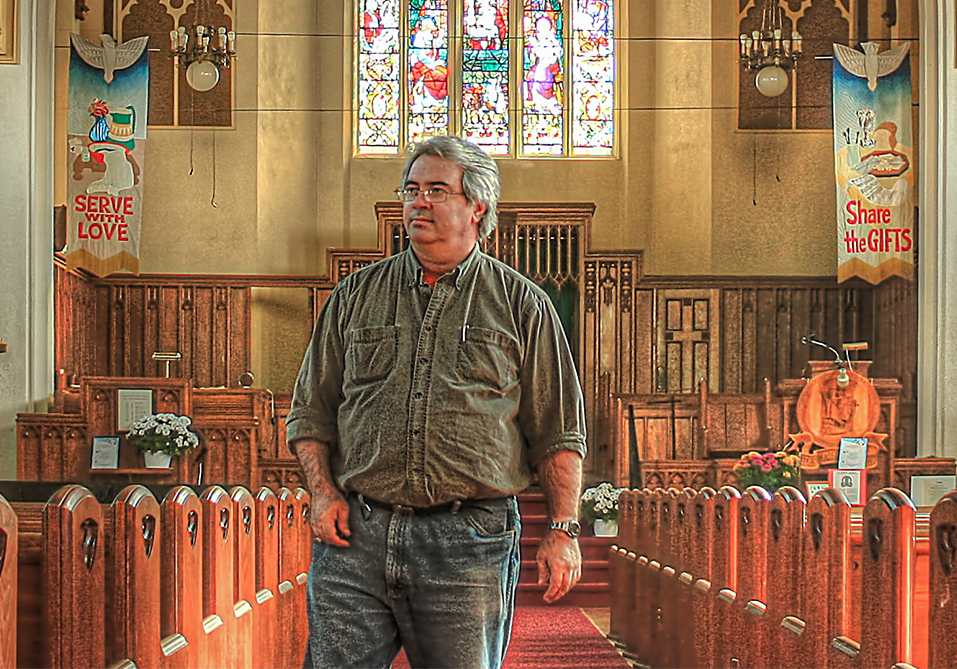In each of the 1,400-plus church system projects Joseph De Buglio has worked on since the early 1980s, his goal has been to remove barriers; specifically those that exist “in the sea of air between the pulpit and the people in the pews.”
Every project comes with a unique set of challenges, the Delhi, Ontario-based acoustician and audio consultant says, citing one (circa 1989) in which a church member bequeathed a substantial sum of money – for a variety of upgrades – but with the stipulation that the new sound system be comprised entirely of components from Radio Shack, an electronics chain renowned for meeting consumer home audio needs, but certainly not for its professional-grade gear.
“It was all done with good intentions. And Radio Shack did have adequate components to create enclosures,” De Buglio adds. “They also sold 100-watt mono amplifiers and a 6-channel mixer with balanced 1/4-inch inputs. I believe we used four amps and combined three mixers to provide 18 channels, and then repurposed an Altec equalizer from the previous system for the mains.”
It’s an amusing story, but one that speaks to his approach to church sound throughout his career – an approach that emphasizes innovative, cost effective solutions over trying to fix every problem with high-end technology.
Getting Started
Prior to founding JdB Sound Acoustics in 1983, De Buglio worked for a time with a construction company that built churches. “I remember going to a Catholic dedication service at a church that I was a part of building and the sound was really bad. I said to the owner of the company, ‘I thought there weren’t going to be acoustic issues in this new building.’ And he replied, ‘What’s wrong with the sound?’”
Following several similar episodes, and after making multiple enquiries about who might be able fix these problems: “Someone said to me, ‘Why don’t you do it? You’re the one complaining,’ so I thought I’d get into this line of work.”
It wasn’t De Buglio’s first audio gig. “When I was a kid my father bought me an accordion and by the time I was 15 I’d starting teaching other kids and playing with a band that performed at Legion Halls. I looked old enough that I could get into places I shouldn’t be in,” he adds, laughing. When the bandleader noticed De Buglio’s interest in audio he decided the young accordion player should do double duty. “So while I was playing accordion I’d have this 12-channel mixer to one side to mix the band. That’s how I started.”
After becoming a Christian he quit the band, but never lost his passion for audio. House of worship work, however, required a wholly different approach; something an early mentor, John Quanz, explained to the 24-year-old fledgling audio professional in no uncertain terms. “John asked me what experience I had, so I told him. Then he pulled out a garbage can and said, “Take all that you know about sound and put it in here. Over the next two hours everything I thought I knew about sound went out the door.”

At that point De Buglio had just sold his first church system project. After speaking to Quanz he went to his client and offered to improve the system by replacing the left/right loudspeaker configuration he’d just sold them with a single central loudspeaker. “A better one,” he says, “placed over the pulpit at the peak of the ceiling. They were resistant, but when I told them to visit a local church Quanz did with a similar solution, they asked me how quickly I could install it.”
While JdB Sound began as a turnkey audio installation company, by 1995 De Buglio turned to consulting full-time, which allowed him to increase the number of projects he took on and expand his reach in Canada and the United States, as well as internationally.
Over time, the company has worked exclusively in the house of worship market, although De Buglio will occasionally lend his talents to other projects. Most recently by aiding longtime friend, audio designer/installer Jon Jukes, with a comprehensive audio upgrade of Kitchener’s Lot 42, a converted factory with multiple performance spaces.
Lot 42’s 4,000-capacity main room is the second largest space De Buglio recalls having worked on. “We’ve installed 400 panel diffusers made of Lexan polycarbonate resin thermoplastic over the windows, along with half round cardboard tubes, and it went from having 4.5 seconds of reverberation to 1.8 seconds.” Although it’s a multi-purpose venue that hosts primarily secular functions, the facility’s owners are considering mounting large-scale Christian rock concerts and actively looking for church communities who may be interested in renting their smaller spaces.




















